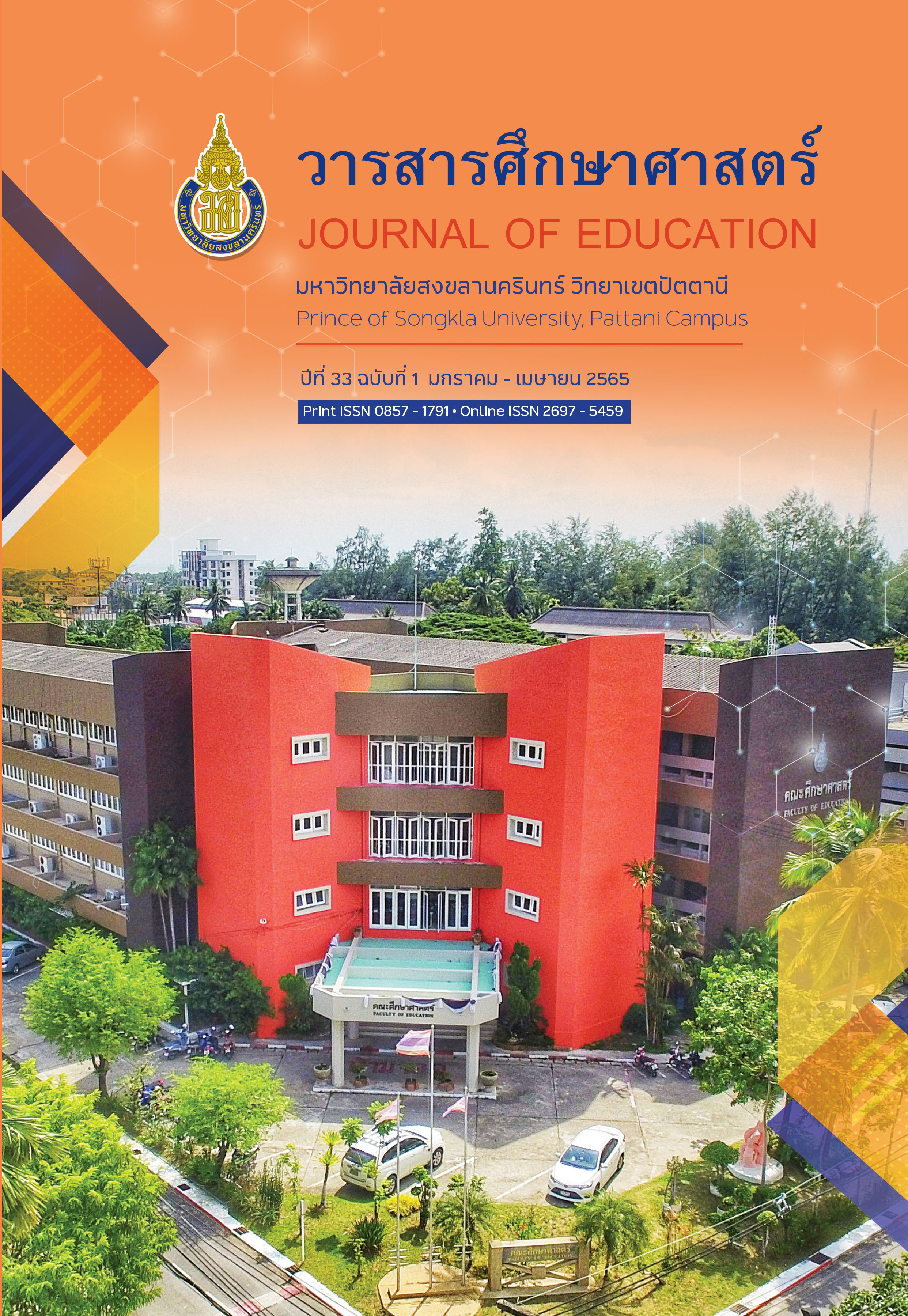นวัตกรรมเลียนแบบธรรมชาติ: อีกทางเลือกของสะเต็มศึกษาในชีววิทยา
Main Article Content
บทคัดย่อ
นนวัตกรรมเลียนแบบธรรมชาติ (Biomimicry) เป็นการศึกษาและทำความเข้าใจความมหัศจรรย์ของสิ่งมีชีวิตในธรรมชาติมาสู่การเลียนแบบเพื่อออกแบบและสร้างนวัตกรรมที่เป็นประโยชน์และสามารถแก้ปัญหาของมนุษย์ ตัวอย่างนวัตกรรมสุดล้ำที่ปรากฏในปัจจุบันได้มาจากการศึกษาธรรมชาติ 2 แนวทาง คือ 1) จากชีววิทยาสู่การออกแบบ (Biology-to-design approach) เป็นแนวทางที่ขับเคลื่อนด้วยวิธีแก้ปัญหาของสิ่งมีชีวิตและเลียนแบบมาสู่การสร้างนวัตกรรม และ 2) การออกแบบสู่ชีววิทยา (Design-to-biology approach) เป็นแนวทางที่ขับเคลื่อนด้วยปัญหาสู่การศึกษาวิธีแก้ปัญหาของสิ่งมีชีวิตในธรรมชาติ เลียนแบบและนำมาแก้ปัญหาให้ดีกว่าเดิม โดยทั้ง 2 แนวทางนี้จะเป็นทางเลือกใหม่สำหรับครูวิทยาศาสตร์มาใช้ในการออกแบบการจัดการเรียนรู้ชีววิทยาตามแนวทางสะเต็มศึกษาต่อไป
Article Details

อนุญาตภายใต้เงื่อนไข Creative Commons Attribution-NonCommercial 4.0 International License.
เอกสารอ้างอิง
Ab. Wahid N-T., & Talib, O. (2017). Stem Integration in Classroom Practices among Biology Teachers in Mara Junior Science College (MJSC). International Journal of Academic Research in Business and Social Sciences, 7(4), 1030-1041.
Benyus, J. M. (1997). Biomimicry: Innovation Inspired by Nature. William Morrow & Company.
Benyus, J. M. (2009, August 2). Biomimicry in action. Retrieved from https://www.embeddingproject.org/resources/biomimicry-in-action
Biomimicry Institute. (2021). What is biomimicry?. Retrieved from https://biomimicry.org/what-is-biomimicry/
Chunhom, C., & Ketsing, J. (2018). STEM education by using 6E Learning by DeSIGN™ Model: Genetic diseases; Duchenne Muscular Dystrophy. IPST Magazine, 46(212), 32-36. [in Thai]
Coban, M., & Coştu, B. (2021). Integration of biomimicry into science education: biomimicry teaching approach. Journal of Biological Education, 1-24.
Çimer, A. (2012). What makes biology learning difficult and effective: Students’ views. Educational Research and Reviews, 7(3), 61–71.
Moyer, H. R., & Everett A. S. (2015). Keeping it together—fascinating fasteners. Science Scope, 39(1), 12-17.
Nicholas, C., & Peterson, J. (2015). Biomimicry: The Natural Intersection of Biology and Engineering. Science Scope, 38(7), 18-24.
Pandremenos, J., Vasiliadisa, E., & Chryssolouris, G. (2012). Design Architectures in Biology. Procedia CIRP, 3, 448 – 452.
Pongsophon, P., Pinthong, T., Vasinayanuwatana, T., & Lerdachapat, K. (2018). Biomimicry for STEM Education. Workshop Document, Division of Science Education, Faculty of Education, Kasetsart University. [in Thai]
Pongsophon, P., Pinthong, T., Lertdechapat, K., & Vasinayanuwatana, T. (2021). Developing Science Teachers' Understanding of Engineering Design Process through Workshop on Biomimicry for Green Design. Srinakharinwirot Science Journal, 37(1), 56-57. [in Thai]
Shimomura, M. (2010). The New Trends in Next Generation Biomimetics Material Technology: Learning from Biodiversity. Science & Technology Trends, 37, 55-75.
Singh, R. A., Yoon, E. S., & Jackson, L. R. (2009). Biomimetics: The science of imitating nature. Tribology & Lubrication Technology, 65(2), 40-47.
Supaka, N. (2010). Biomimicry. Bio & Nano, 37(213), 32-36. [in Thai]
Vasinayanuwatana, T., Ketsing, J., Pongsophon, P., & Chattham, N. (2019). Current state, problem, need and readiness for STEM education in Islamic private schools. Journal of Education, Prince of Songkla University, Pattani Campus, 30(1), 96-109. [in Thai]
Vincent, F. V. J., Bogatyreva, A. O., Bogatyrev, R. N., Bowyer, A., & Pahl A-K. (2006). Biomimetics: its practice and theory. Journal of the Royal Society Interface, 3, 471–482.
Wakuda, Y. (1997). Railway Modernization and Shinkansen. Japan railway and transport reviews, 60-64.
Wanieck, K. Ritzinger, D., Zollfrank, C., & Jacobs, S. (2020). Biomimetics: teaching the tools of the trade. FEBS Open Bio, 10, 2250–2267.
Yurtkuran, S., Kırlı, G., & Taneli, Y. (2013). Learning from Nature: Biomimetic Design in Architectural Education. Procedia - Social and Behavioral Sciences, 89, 633–639.


